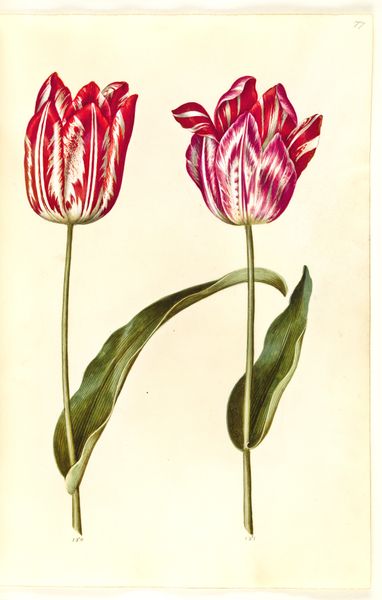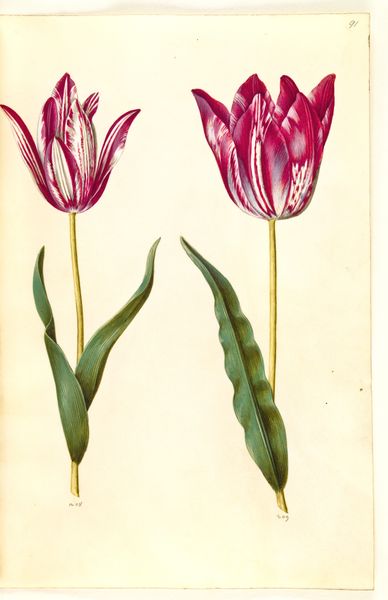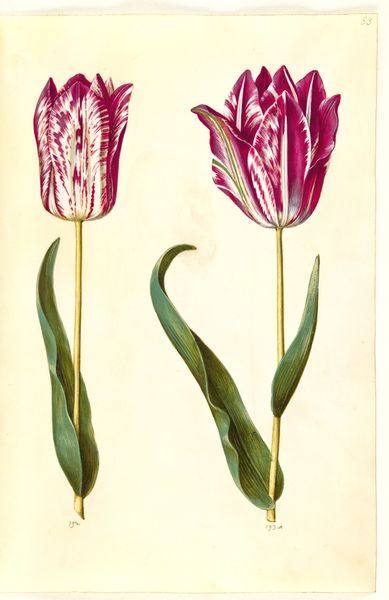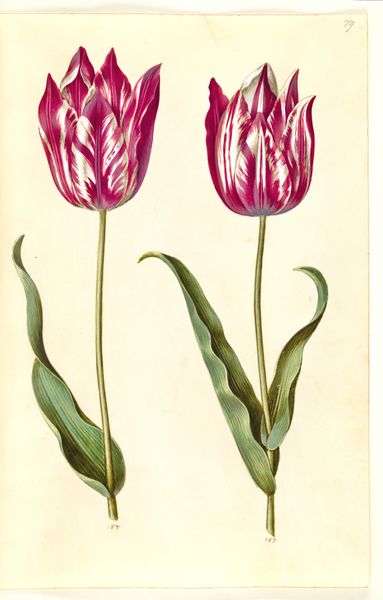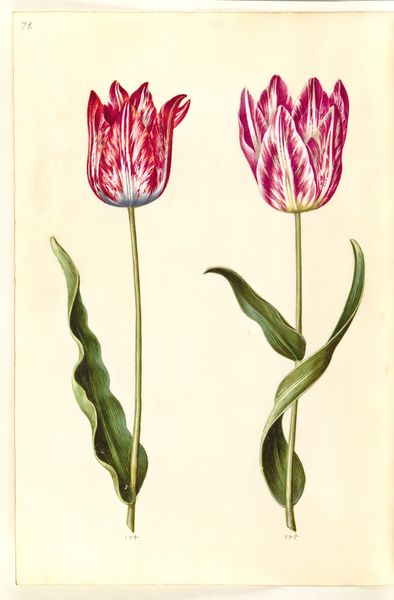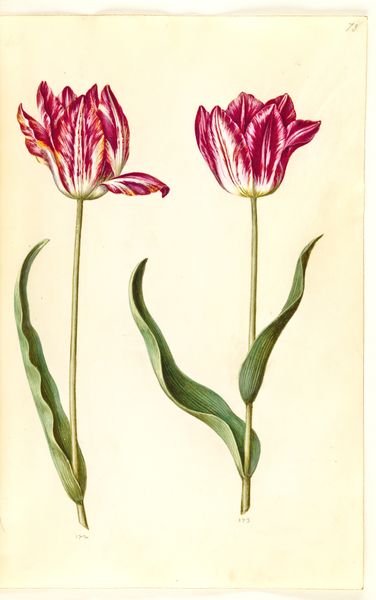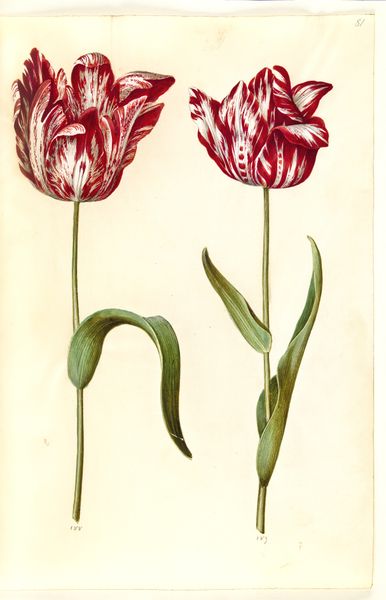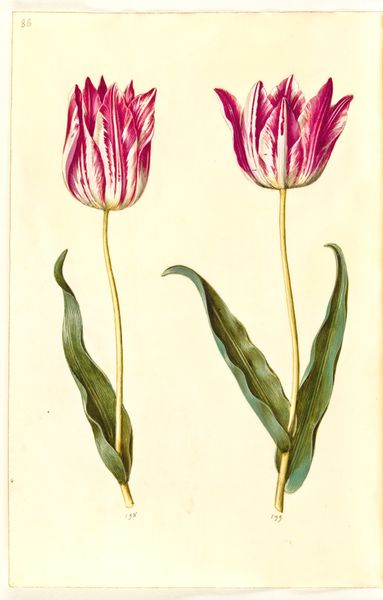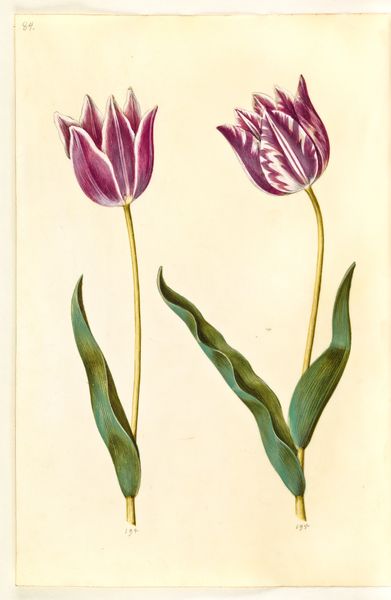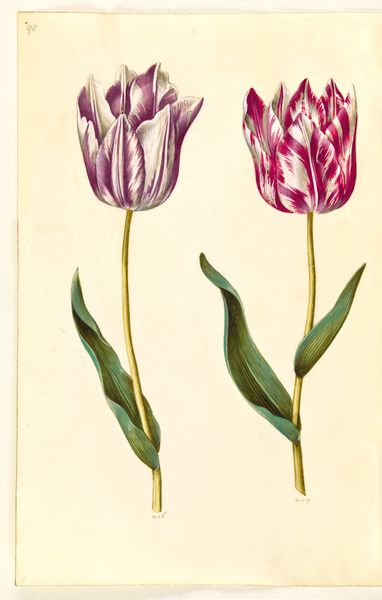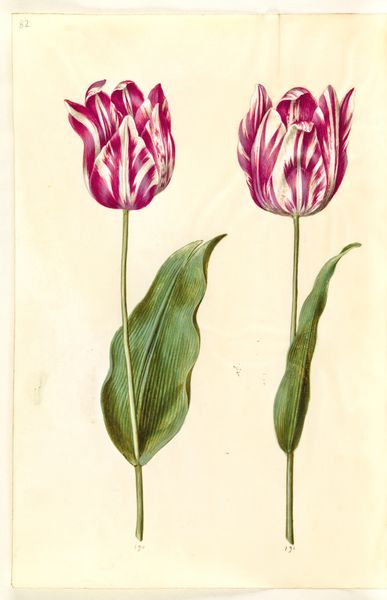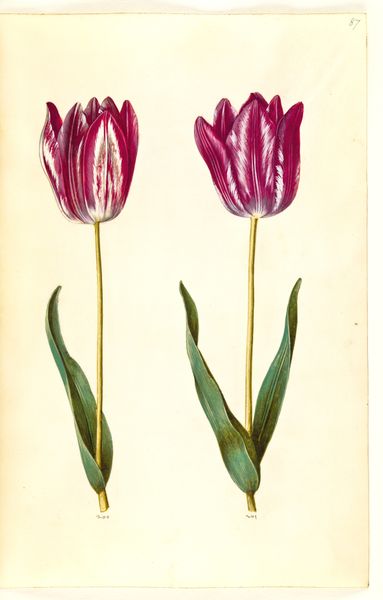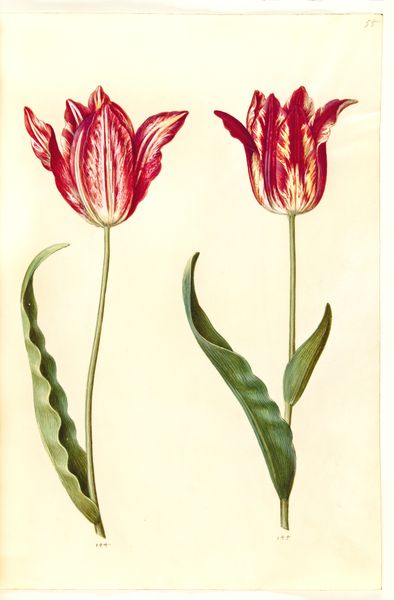
drawing, gouache
#
drawing
#
dutch-golden-age
#
gouache
#
watercolour illustration
#
botanical art
Dimensions: 375 mm (height) x 265 mm (width) x 85 mm (depth) (monteringsmaal), 358 mm (height) x 250 mm (width) (bladmaal)
Hans Simon Holtzbecker rendered this depiction of "Tulipa gesneriana" with watercolor and gouache on paper. The tulip, a symbol of luxury and desire, dominates the image. During Holtzbecker's time, tulips weren't merely flowers; they were emblems of status, sparking 'Tulip Mania,' a speculative frenzy in the Netherlands. These striped petals, caused by a virus, ironically enhanced their desirability. This mania reminds us of other historical obsessions, like the pursuit of gold or rare spices, driven by deep-seated human desires. Consider, too, how the image of the flower has evolved. In ancient Persia, the tulip symbolized love, while its arrival in Europe transformed it into a symbol of wealth and ostentation. This transformation speaks volumes about our changing values and the psychological power of symbols. Just as Narcissus was drawn to his reflection, we are drawn to objects that mirror our aspirations. The tulip's journey is a reminder of how cultural memory shapes our perceptions, turning a simple flower into a potent symbol of human desire.
Comments
No comments
Be the first to comment and join the conversation on the ultimate creative platform.
